"This is the first time we see this kind of rock art in dolmens in the Middle East," said Israel Antiquities Authority archaeologist Uri Berger in a video accompanying the IAA press release on Wednesday. The findings were published in a scholarly article co-authored by Berger and Tel Hai College's Prof. Gonen Sharon last week in the peer-reviewed journal Asian Archaeology.
"These megalithic structures were built more than 4,000 years ago. They are ancient burials and they were built by a group of people of whom the only thing we know is that they built their dolmens," said Sharon in the video.
Recently discovered inside one of the ancient stone burial chambers were six different animals carved into the rock. In the panel, one can clearly see animals in different poses, even looking at each other. On a facing wall, one can see what appears to modern eyes as three windows, complete with panes.
"You can see for sure that there's a composition... It meant something for the culture that built this dolmen," said Berger.
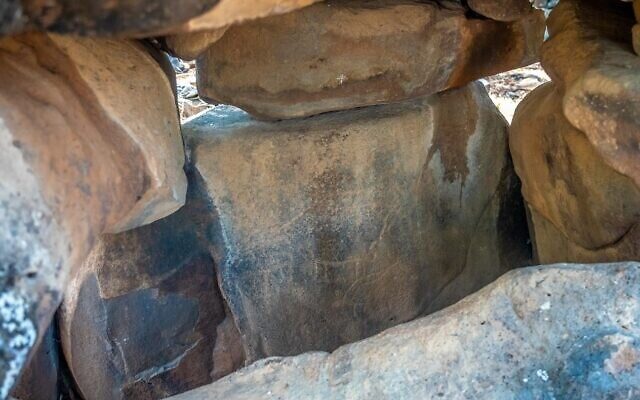
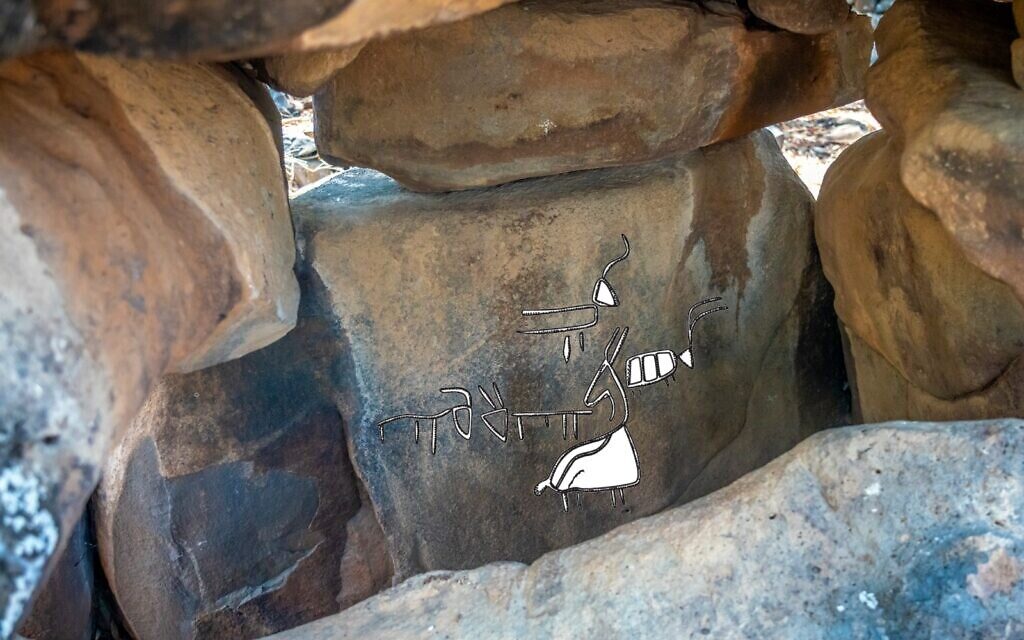
The Kibbutz Shamir etchings were found inside a multi-chamber dolmen that is arguably the largest in the Middle East. The etchings are of 14 unique trident-like carvings on the ceiling of a chamber built of massive basalt slabs with a capstone roof that is estimated to weigh circa 50 tons. The 25-centimeter-long tridents (9 inches) form a path that moves northeast to southwest and are the only such etched tridents that have been discovered in the Middle East.
In the article, "Rock art in south Levantine dolmens," the authors explain that little is known about the thousands of early Bronze Age dolmens found scattered across the southern Levant, mostly in Syria, northern Israel, and Jordan.
"Unlike in Europe and other parts of the world, rock art has rarely been reported from Levantine dolmens, despite more than 150 years of research and hundreds of excavated dolmens of the thousands of megalithic structures recorded," write the authors.
All about dolmens
The new research project involved a survey of dozens of dolmens in the Upper Galilee and Golan "in an attempt to uncover the world of this mysterious culture that existed more than 4,000 years ago, and left behind only dolmens as evidence of their rich culture," said Sharon in the press release.
Dolmens are found the world over, created by peoples spanning from the Neolithic to the Iron Age. The "Israeli" dolmens of the Golan and Hula Valley were constructed during the Intermediate Bronze Age 4,500-4,000 years ago. The authors define them as a "megalithic burial structure constructed from unhewn megastones with no cementation between them," which are often found in clusters, or dolmen fields. For example, the Shamir Dolmen Field contains over 400 dolmens, often made of massive black basalt slabs.
Comment: With no burial artefacts found within or near the structures to label them as such is likely incorrect.
In the article, the researchers describe three types of rock art found in or on the dolmens: engraved panels inside two dolmen burial chambers (herd and tridents); cup-shaped depressions in "non-functional locations" on dolmen walls and ceilings; and a uniquely shaped capstone, or roof.
The authors note that in addition to aesthetic and perhaps religious insight into the humans who carved the shapes, the rock art uncovered in a relatively enclosed dolmen allows for more precise dating than contemporary figures on open desert panels. "Rock art panels abundant in the Negev and Sinai are generally exposed on a rock surface that could have been used and reused over long periods of time," write the authors.
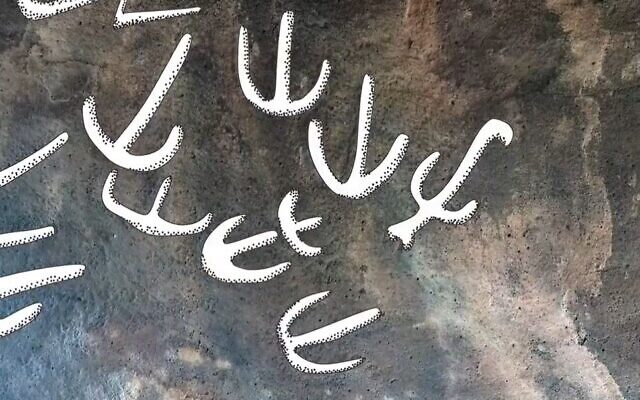
Engraved panels: The new herd-scene dolmen
The "new" 4,000-year-old rock art was discovered on three walls of a large dolmen in northern Israel that sits prominently on an overlook ridge. They were discovered when Paula Foley, a Society for the Protection of Nature in Israel inspector, caught a glimpse of horned animals, such as mountain goats, antelopes and wild cows, carved into the wall.
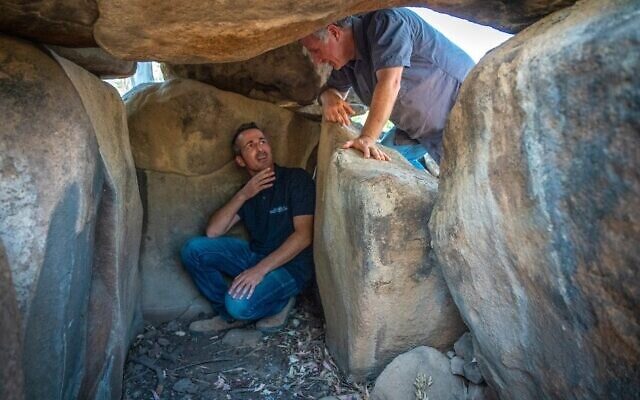
The engraved rock art, while visible to the naked eye, is faded. The researchers used reflectance transformation imaging (RTI) photography to enhance resolution of the forms' shape and color to draw out the features and make positive identification.
The first wall holds the herd picture of six horned animals, each of which are of different size. The authors hypothesize that the artists used differences in shape and angle of curvature of the animals' horns to represent different species and sexes. "Two of the animals are facing each other and appear to be the same size, almost reflections of one other. Yet, a slight difference between the curvature of the horns is discernible."
Opposite the herd scene, a more faded single-horned animal was discovered and was engraved in a similar artistic style, wrote the authors. On a third interior wall, the authors describe the discovery of a non-figurative motif of three crosses enclosed by rectangles (ca. 8 x 8 centimeters). The authors note that similar drawings were discovered in Negev Desert rock art, also adjacent to horned animals, as well as hunting scenes.
The authors write that the horned animals in these panels "are the first reported bovine motifs in the northern, non-arid parts of Israel. Moreover, this is the first time that zoomorphic art has been discovered in the context of Levantine dolmens."
When studying the unique animal scene dolmen, the archaeologists discovered a small bronze knife made of arsenic copper, a material that corresponds to the Intermediate Bronze Age dating given to the structure.
Have a cup of Joe — from the ceiling
In Europe, Asia and many locations in northern Israel, researchers have discovered cup marks in what are clearly non-functional locations on dolmen walls and ceilings. In Umm El-Kalha, for example, four dolmen cup marks were carved into the inner ceiling of the capstone "and hence in an upside-down nonfunctional position."
While some previous scholars have hypothesized that they may have been used for rituals — even using blood — the authors write with understatement that these upside-down cup marks are challenging to interpret and should be thought of as an artistic motif.
"The same holds true for cup-marks drilled perpendicular to the ground, documented on the inner and outer walls of dolmens in the Golan Heights and Galilee," they write.
Interestingly, archaeologists have discovered in many Levantine dolmens in northern Israel what appear to be two or more rows of small pits reminiscent of the board game Mancala.
An ancient smiley?
In the third type of dolmen rock art, researchers discerned what looks to be a face carved into the outside of a capstone. While they are extremely cautious of identifying the carving as a smiley, they write, "These lines are precisely located to fit the overall shape of the capstone and to resemble a humanlike face: the two pairs of short lines mark the eyes and the long line represents the mouth of the figure. Of course, this is one of many possible explanations for the location and meaning of these carved lines."
The smiley was found on one of only three dolmens remain standing in the Qiryat Shemona dolmen field, which is characterized by relatively small-sized chambers. Some 25 others were excavated in a salvage operation prior to the enlargement of an industrial zone outside the city.
According to the article, assuming the smiley is intentional, it may be one of a kind, which in the authors' view supports the idea that it is rock art and not random lines. "We are also unaware of any parallel to the QSh-1 ethnographic representation of a schematic human face in the context of dolmen building stones in or outside of the Levant."
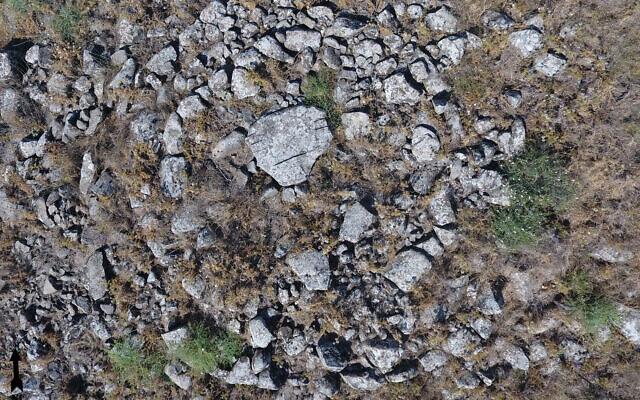
"This art opened a window, a world beyond the stones," said Sharon. "What were their thoughts? Their religion? It allows us to have a look into their beliefs and culture."
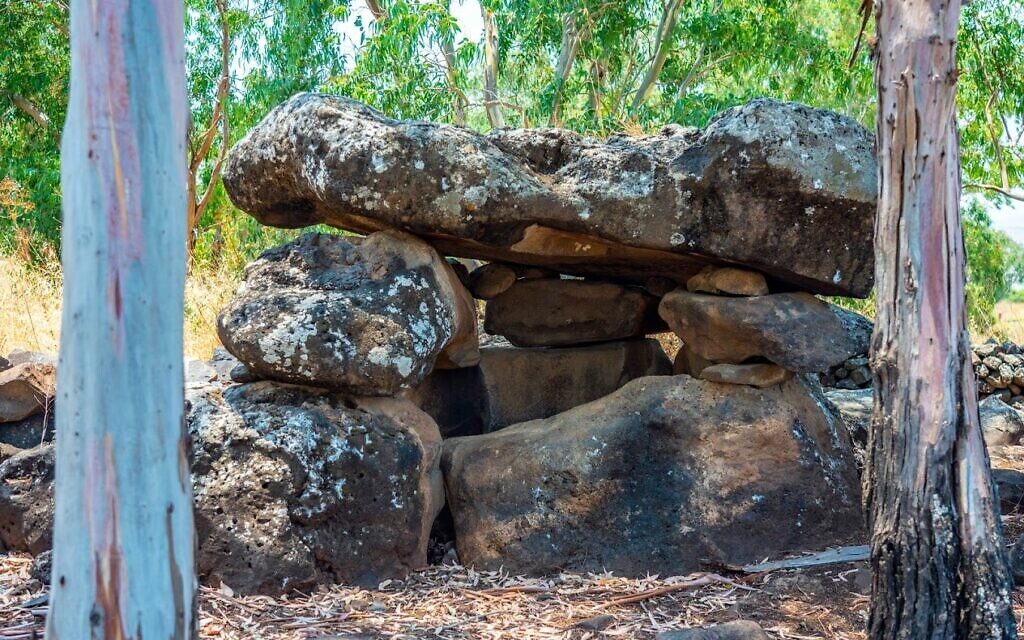
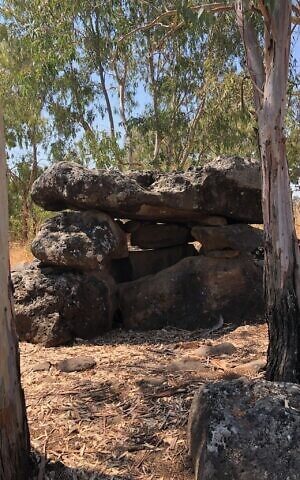
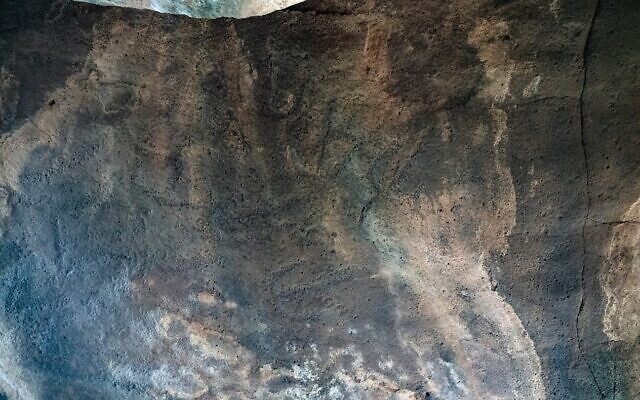
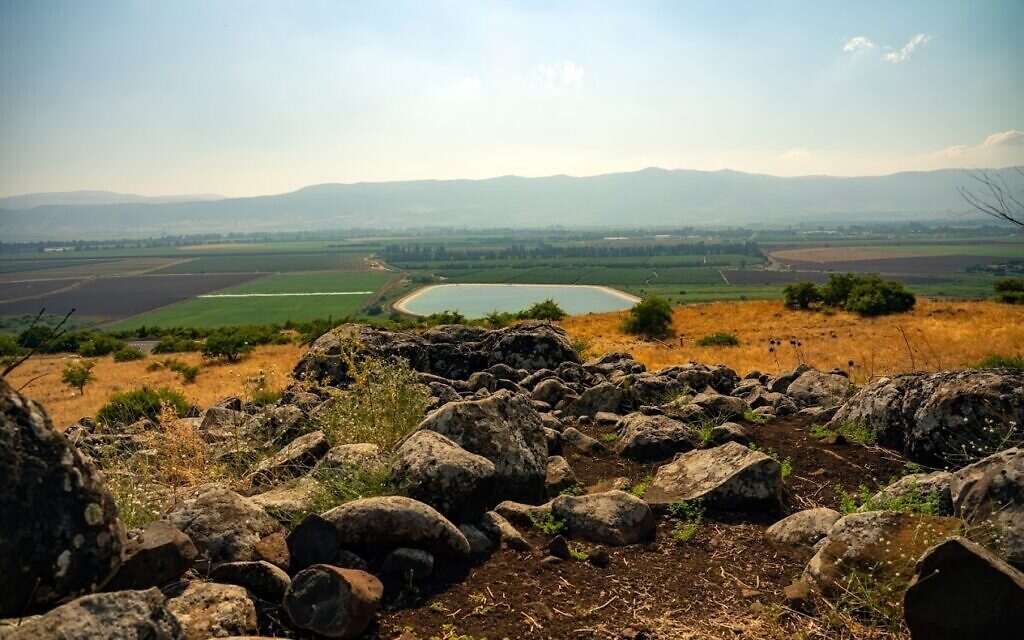
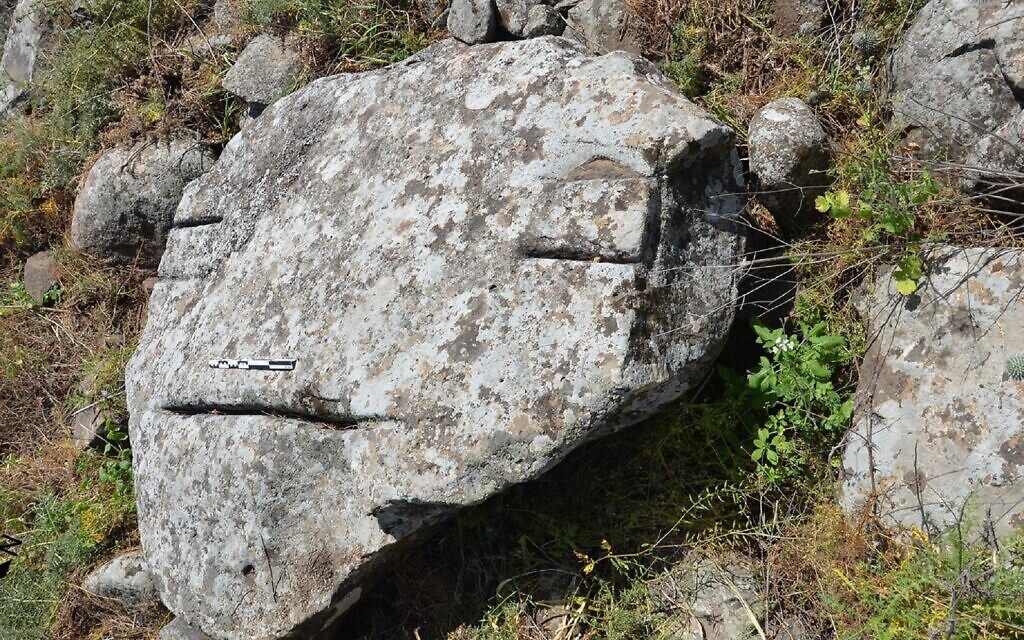



R.C.